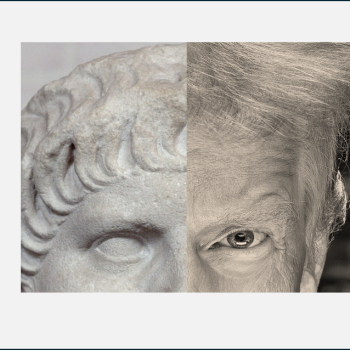Michael Sheen’s The Passion of Port Talbot is a modern retelling of the crucifixion that could inspire churches to tell their own story. But you don’t have to be a Christian to appreciate its message.
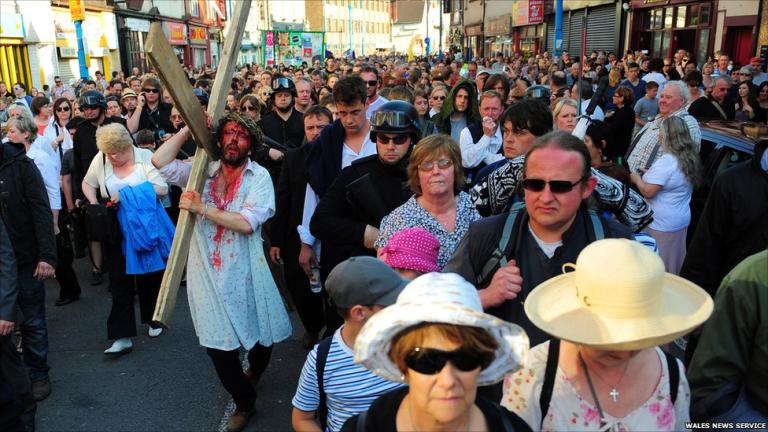
Six months ago, after falling in love with the television series, Good Omens, I became smitten with the Welsh actor, Michael Sheen, who plays the angel Aziraphale alongside David Tennant’s demon Crowley.
Who is Michael Sheen?
Diving into Sheen’s oeuvre, I discovered that he is the chameleon actor who has been in movies such as Tron: Legacy (Castor/Zeus), the Twilight series (Aro), Far from the Madding Crowd (William Boldwood), and Passengers (Arthur). Sheen’s ability to transform himself into every character he inhabits is unparalleled, including famous figures such as David Frost (Frost/Nixon), Tony Blair (The Deal, The Queen, and The Special Relationship), and William Masters (Masters of Sex).
I’m now on a “Sheenathon” to watch and listen to every movie, television episode, audiobook, and recorded theatre play I can find.
(And shout-out to @TheBendySlow on Twitter who coined the phrase “Sheenathon” and whose meticulous cataloging of all things Michael Sheen has obliged my newfound obsession. Also see The Sheendex and Michael Sheen Links, both of which have a comprehensive online archive of Michael Sheen’s work.)
As an ordained minister and seminary professor, I was especially keen to watch The Passion of Port Talbot.
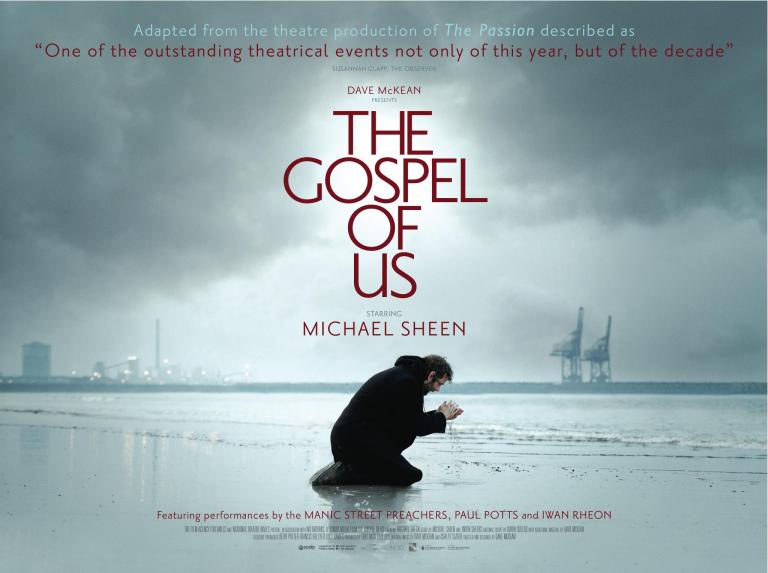
This was an epic modern retelling of the crucifixion of Christ where Sheen’s entire hometown in Wales became the theatre over a three-day period in April 2011. Estimates are that upwards of 12,000 people experienced the event which was a production of the National Theatre Wales. The play was based on the book The Gospel of Us, by Owen Sheers who also wrote the script. Michael Sheen and Bill Mitchell co-directed the play, and Sheen served as the creative director.
A movie by the same name was made based on the play, but it’s not available in the U.S. However, there is a one-hour documentary of the event available on YouTube, so I watched it on Good Friday. [The Sheendex has compiled a helpful archive of The Passion of Port Talbot which you can access here.]
Oberammergau in Wales?
In some ways, The Passion of Port Talbot brings to mind the Oberammergau Passion Play which has been held in that German town every ten years since 1634 and draws hundreds of thousands of spectators. But while the Oberammergau play aims to be an historically accurate portrayal of the Passion and is firmly rooted in the Christian gospel of Jesus’s message, The Passion of Port Talbot centers the town itself. The Teacher’s Christ-like journey both emerges from and reflects the memories and resistance of the people.
Both stories, however, share common themes of a people struggling against oppression and exploitation, longing for liberation and an inspiring leader, and finding strength to resist inequality, violence, and subjugation.
In the film, Michael Sheen states that he’s not a Christian. But he’s someone who is fascinated by the figure of Christ.
“So I’m coming at it from the point of view of someone who is just fascinated by the story, fascinated by this figure, and trying to discover and reveal what this means to me now through the prism of the town that I grew up in,” he says.
Port Talbot is a seaside industrial steel town. It reminds me of certain towns in Pennsylvania where I grew up (think Allentown minus the beach). The plot revolves around ongoing confrontations between The Teacher (Sheen) and the Company Man from “ICU” who represents the corporations that have taken over the town.
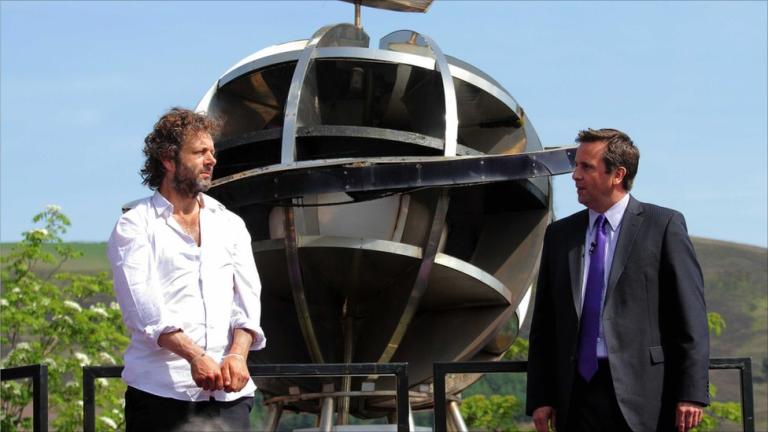
“I see you. Do you see me?” becomes a recurring exchange during the three days.
The scenes of The Passion of Port Talbot take place all over the town. At the beach, a John the Baptist figure bear-hugs The Teacher into the ocean for his baptism. In the town square, a protestor from the Resistance movement against the company is shot and The Teacher, cradling her body, announces, “I’m here to listen!” At a local club, they have the Last Supper amidst music and dancing until the members of the band (The Manic Street Preachers) are arrested.
One particularly poignant and haunting scene happens at a place ironically named “The Passover Project” – the underpass of a huge highway built in the 1960s that cut right through a section of the town. The highway resulted in numerous evictions and severed neighborhoods. In this scene, “ghosts” from that time meander through the crowd recounting memories of how it used to be before the highway.
“Do you see me? Can you see me?” they ask.
There’s also a profound exchange between The Teacher and a young girl in a wheelchair who can only communicate through sign language. He asks if he can take her father with him on his journey because he doesn’t want to do it alone. An interpreter voices her words of assent. I deeply appreciated that this girl was given such a prominent role; her voice and her agency took center stage.
Later after the Last Supper scene, The Teacher goes outside to a grassy circle surrounded by a small group of home.
This is his Garden of Gethsemane.
“God” appears high on the scaffolding above him.
“Do you see me?” The Teacher asks. They have a cryptic exchange, and then the police come to arrest him.
He is dragged in front of a kangaroo court where thousands of people have gathered to watch. He is accused of leading the people, making them believe he can make things better. “Are you the king of these people?” the prosecutor demands.
After another cryptic exchange with God on high, The Teacher responds, “I am!” He is then dragged away by the police as the cock crows.
The next morning, two hooded men are brought out from the police station and placed before the crowd.
The Company Man picks one child to choose which of the criminals to set free – The Teacher or The Terrorist. The Terrorist had been involved in a suicide bombing plot. But The Teacher is accused of “leading an ideological revolt against the council and company and planning an insurrection.”
The Company Man announces the pre-determined verdict, and the Terrorist is set free while the crowd shouts and boos. Significantly, in this story (contrasting with the biblical stories), the crowd does not turn on their beloved Teacher. Instead, they remain steadfast in their support of him.
One townsperson interviewed made the connection between the play and the real-life situation in Port Talbot. “They keep bringing in these industries, dumping all this pollution on us that we don’t want.” Just as the highway they didn’t want was imposed on them. The Teacher’s only crime was being there to listen, and, in turn, help the town hear their own story. But this was exactly what the ICU Company could not allow.
The power of ideas and words
Something became clearer to me than I had ever perceived before when reading the gospel accounts of the Passion. What I saw writ large in The Passion of Port Talbot was that the ideas of a peaceful revolutionary are more powerful and more of a threat to the system than the acts of a single violent man. The latter they can control. The former they cannot.
The police drag The Teacher into the police station. A screen in the town square shows the action inside. They surround him and then attack him, beating him bloody.
This public spectacle is critical.
It communicates to the people: This is what we will do to you if you have ideas and speak words that might upend our power and control.
The Teacher then emerges carrying the cross and begins a procession that winds its way through the town. As the camera pans out, we see there are thousands of people – not just standing on the sidelines observing but spontaneously joining the procession.
This has become so much bigger than anyone had anticipated.
Along the way, they stop at an outdoor mall where a bell choir and harpist play soothing music, and The Teacher is permitted to take a break. A group of women (including Sheen’s real-life mother) tend to his wounds and wash off the blood. They also weave roses into his crown of thorns.
Later when the procession resumes, they come upon a children’s choir singing, “Let there be peace on earth,” and he smiles at them gratefully.
A town coming together
Along the way, one woman interviewed says, “I’ve seen people that I haven’t seen for years. The Passion has brought us all together. We’re a community being one.”
As the narrator says, “Despite the barbaric ordeal that Sheen is portraying, the procession has turned into an extraordinary celebration for the whole community.” People spontaneously emerge from their homes holding up their Port Talbot memorabilia as the processional passes by.
In other words, the town will not be silent.
As Jesus told the religious leaders who wanted him to silence his followers on Palm Sunday, “Even if these were silent, the stones would cry out” (Luke 19:40).
Finally, they come to the site of the crucifixion. I will stop my description here, because I don’t want to spoil it for you in case you decide to watch. And I hope you do, because this final scene is stunning.
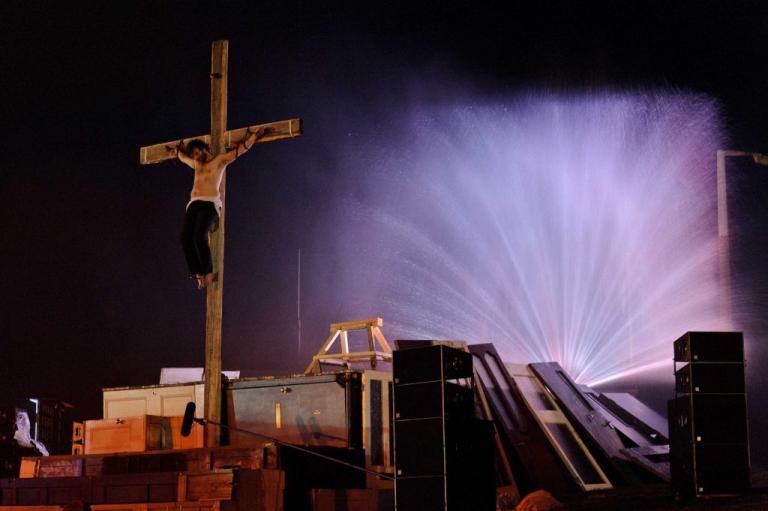
But I will tell you about one other thing that stunned me just as much.
There is a 20-minute video called “The Teacher’s Story” in which Michael Sheen takes a hand-held camera and records what happened to The Teacher before the Passion began. It’s like a modern-day depiction of Jesus in the wilderness. I have never seen anything like this. His acting is truly astonishing. I encourage you to watch it. But watch it after you watch the documentary, because it’s the prequel you didn’t know you needed.
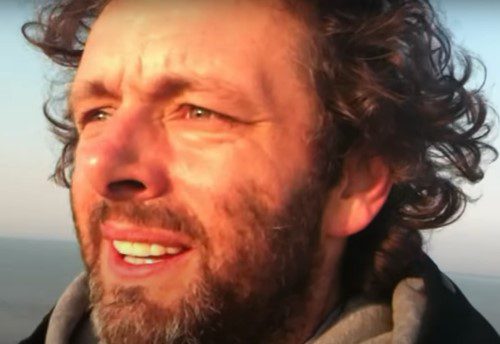
If you are a Christian, The Passion of Port Talbot will give you an experience of the gospel in a way you never expected. But you don’t have to be a Christian to appreciate The Passion of Port Talbot.
Because the story, the setting, the people, and the acting converge in a way that demonstrates what is possible when people come together to tell their story. There is a holiness in the wholeness of the community. There’s a sacredness in the story of a small town recalling their history and claiming their identity.
Thirteen years later: The Way
Notably this year, Michael Sheen made his directorial debut with The Way, a three-part drama on the BBC that again situates itself in Port Talbot. It’s a dystopian apocalyptic story of a family fleeing a civil uprising. This time, the seething steelworks is central to the drama instead of its backdrop. In a sense, The Way could be seen as an outgrowth of the Passion of Port Talbot, in that the seeds of uprising explode into a full-blown rebellion.
In both dramas, Sheen involves the whole town of Port Talbot, and they readily enlist in each endeavor to tell their story.
Could the Passion of Port Talbot be a model for congregations and communities to tell their own story?
Having written and directed many plays for congregations I’ve served over the years, as well as having experience in community organizing against polluting industries, I deeply admire Sheen’s commitment to the people of his hometown. And I am moved by the way his community responded.
So, I wonder what it might be like for a church or a town to use Sheen’s work as a template for telling their own story. What would it look like for your congregation or community to launch its own Passion, honoring their roots and history – the good, the bad, and the ugly?
I’ll end by sharing what Michael said to the cast and crew after the event was complete:
This is your Passion, our Passion. Nobody has ever done that before [in this town]. The entire town coming together to tell the story of itself, to itself, to be witnessed by the world. What happened is that we became more than ourselves. We became something much bigger. And great things can be achieved, and that’s what community is about. That’s what this was all about.
Read also:
Good Omens: An Antidote to Toxic Christian Apocalyptic Fiction
Falling In Love with Aziraphale and Crowley: Love Leaves Its Clues
Aziraphale’s Choice: The Tragic Theology & Ecclesiology of Good Omens

The Rev. Dr. Leah D. Schade is the Associate Professor of Preaching and Worship at Lexington Theological Seminary in Kentucky and ordained in the ELCA. Dr. Schade does not speak for LTS or the ELCA; her opinions are her own. She is the author of Preaching in the Purple Zone: Ministry in the Red-Blue Divide (Rowman & Littlefield, 2019) and Creation-Crisis Preaching: Ecology, Theology, and the Pulpit (Chalice Press, 2015). She is the co-editor of Rooted and Rising: Voices of Courage in a Time of Climate Crisis (Rowman & Littlefield, 2019). Her newest book is Introduction to Preaching: Scripture, Theology, and Sermon Preparation, co-authored with Jerry L. Sumney and Emily Askew (Rowman & Littlefield, 2023). She is also the co-founder of the Clergy Emergency League, a network of faith leaders supporting each other in their resistance against Christian Nationalism.






